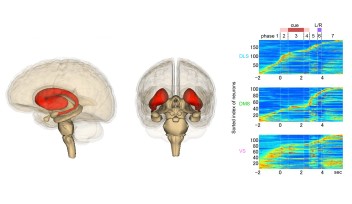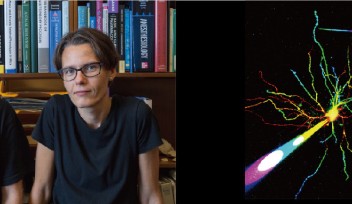Dr. Masaki Isoda identifies neural structure for self-other distinction in motor domain
New study identifies a neural structure for
self-other distinction in the motor domain
Okinawa, Japan, January 21, 2011 — A new study on social cognition conducted by Masaki Isoda at the Okinawa Institute of Science and Technology Promotion Corporation (OIST) and the Japan Science and Technology Agency, in collaboration with Kyoko Yoshida and Nobuhito Saito at the University of Tokyo Graduate School of Medicine and Atsushi Iriki at the RIKEN Brain Science Institute, has clarified a key role for the medial frontal region of the cerebral cortex in differentiating between the actions of oneself and the actions of others. Published in Current Biology, this study opens up new avenues for research into the neuronal basis of social cognition in health and disease.
Controversy surrounds the way in which actions of other individuals are represented in the brain. The prevailing theory is that the so-called ‘mirror neurons’ play a pivotal role in the shared representation of self-action and other’s action. Specifically, mirror neurons fire both when a subject performs a particular motor action and when the subject observes the same action performed by another. These neurons are hypothesized to bridge the gap between the physical self and others, thereby facilitating our understanding of the actions and intentions of others. However, if the actions of another closely overlap our own actions in our brains, how can we know that it is someone else who is acting when we observe an action? Obviously, the brain needs a separate mechanism (or mechanisms) that enables one to distinguish other’s actions from one’s own.
To address this issue, the researchers developed an interactive decision task for a pair of monkeys. They found that the monkeys were capable of utilizing other’s action information to guide their own actions. During the animals’ performance of the task, the researchers monitored the activity of individual neurons in the medial frontal cortex (MFC). To their surprise, many neurons in this brain region were selectively activated by the partner’s action. Such partner-selective neurons were more prevalent in the superficial part of the MFC than in the deeper part of the MFC. This finding indicates that the MFC, particularly its superficial part, encodes other’s actions at the level of single neurons.
This new research provides important insights into the neuronal basis of self-other distinction as well as other domains of social cognitive functions such as social learning. Future work will build on the current findings toward a better understanding of a range of mental disorders in which the assignment of social agency breaks down.
Article information:
- Journal Name: Current Biology
- Article Title: Representation of others’ action by neurons in monkey medial frontal cortex
- Authors: Kyoko Yoshida, Nobuhito Saito, Atsushi Iriki, Masaki Isoda
For more information, please contact:
Dr. Masaki Isoda
Unit on Neural Systems and Behavior
Okinawa Institute of Science and Technology (http:// www.oist.jp)
E-mail: masaki.isoda@oist.jp
Ms. Kaoru Natori
Communications and PR Section, General Affairs Group
Okinawa Institute of Science Technology Promotion Corporation (http://www.oist.jp)
TEL: +81-(0)-966-2389 FAX: +81-(0)-966-2887 E-mail: kaoru.natori@oist.jp














